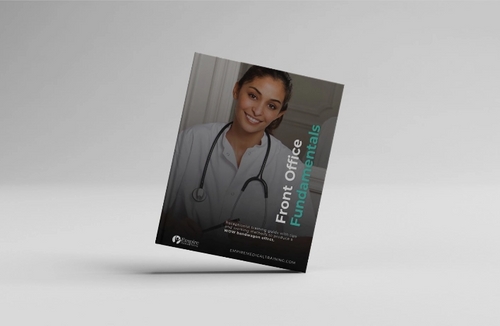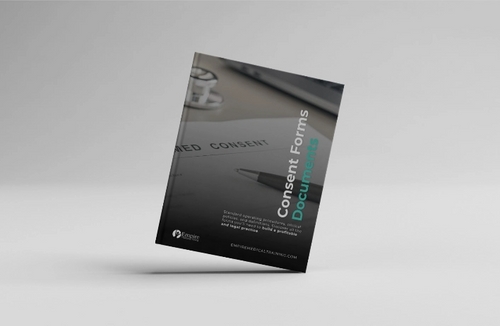Updated 08/14/2024
Empire Medical Training, Inc. and its affiliates (herein referred to as “Empire”) is proud to offer our unmatched NO RISK Quality and Price Guarantee. Please read this entire document, so you fully understand the Empire terms and conditions, in order to minimize any future confusions. We believe Empire’s terms and conditions to be most fair and reasonable to our participants and we stand behind and guarantee our services, it is important for you to understand both what is and is not provided by Empire, to minimize the risk that you will be dissatisfied with the Empire training program for any reason.
EMPIRE’S BETTER-THAN “GET YOUR MONEY BACK” POLICY ALLOWS YOU TO ATTEND EMPIRE’S PROGRAMS AT NO RISK.
Empire Wow Refund Guarantee® provides that if you attend your first live in-person program course (not virtual) and do not believe it was the best program ever YOU WILL RECEIVE A COMPLETE REFUND AND UP TO $500 REIMBURSEMENT FOR YOUR TRAVEL! (minus the non-refundable administrative fee) A FIRST IN THE INDUSTRY! All books and materials are yours to keep (excluding certifications and registered CME). For this refund to apply, you must attend the morning session of your first training program (live in-person program) (please be advised that there will be no refund for no shows or cancellations prior to the event), decide it was not the best program, and request a refund prior to the commencement of the afternoon session by completing and submitting to the Empire representative the company refund form, signed by each the Empire representative and yourself. Members must request for a refund during their first training program (in-person program only, not virtual or at home programs). It is your responsibility to make sure the Empire representative signs the form and indicates that it was received prior to the commencement of the afternoon session. Once you submit the refund form, you may keep the books and materials as our gift, but may not return to the training program. IF you resume the training, this guarantee will be void. You must present proof of travel expenses for exact reimbursement, which shall not exceed $500. Your refund and travel expenses (up to $500) will be promptly issued the following week upon our return. This offer may not be combined with Empire Wow Satisfaction Guarantee, If you receive a Refund Guarantee, you are not permitted to receive the Empire WOW Satisfaction Guarantee.®
Empire WOW Satisfaction Guarantee® provides that if you're not fully satisfied with a training program or feel you need additional training, Empire will allow you to retake the course at one of our Empire Centers of Excellence at no additional charge. However, you will be responsible for any personal travel-related expenses. This offer cannot be combined with the Empire WOW Refund Guarantee®.
Empire WOW Price Guarantee® provides that Empire will refund you back the difference between what you paid for your Empire training and a less expensive course. For this refund to apply, you must submit the company refund form to Empire within 30 days after registration. The less expensive course must have published prices, offer comparable training, and include all books, materials, certification, supplies, and medicines with their fees. Proof of this information (such as printed and/or website marketing materials of the less expensive course must be included with the company refund form). The refund shall not include or take into account any travel expenses incurred for either course.
There are absolutely no refunds for any product or service unless these terms and conditions are precisely followed. As Empire incurs costs associated with each registration, there are NO refunds for “mind changing ”(deciding you no longer want to attend the program), no shows, cancellations prior to the event, or if the participant completes the training in full, receives their certification, and voices their complaint after the program has completed, or any time thereafter using the education and training received.
1-Year Membership Add-On Extension: With the 1-year add-on extension, you can extend your membership by an extra 12 months beyond the original 1-Year Membership term. This extension allows you to complete any incomplete courses included in your Empire Membership plan. Please note that the 1-year membership extension is not equivalent to the Empire Membership levels (e.g., Empire Platinum Membership, Empire Diamond Membership, Empire Dental ‘D’ Membership, and Empire Blue-Diamond Membership). In the event of a refund request that is approved for any reason, Empire will issue a refund for the 1-Year Membership Add-On Extension only.
Administrative Fees: All administrative fees are waived for workshop registrations and all Empire Membership plans, provided the registrant is not refunded for said workshop or membership plan later. If the registrant requests and Empire issues a refund, within 30 days of the event, the administrative fees will be deducted from the monies refunded. For single workshops, there is a $300 administrative fee, and for membership plans a $600 administrative fee. Administrative fees cover items such as nonrefundable medicines, supplies, and workshop set up.
Virtual Training: Unlike Empire’s live programs where refunds are provided as outlined in our guarantees, there are absolutely no refunds for virtual training. Empire follows Terms similar to companies who sell software, books, and video. Upon registration to a Virtual Program you will receive a special, coded “Access Key” giving you complete access to view (download, copy) all educational materials. Upon receipt of your “access key” (delivered immediately during registration), the sale will be final, and no refunds provided.
We believe Empire’s refund and price guarantee policies to be extremely fair and significantly reduces your risk. However, the terms and conditions set forth above applicable to Empire’s refund and Price guarantee policies must be strictly followed for Empire to provide these no risk options for you. Industry standard is to provide no refund, period if a student is unable to attend. Typically, tuition fees may be transferred to another seminar date, or to another individual, however, no refund will be issued. Although we guarantee and believe in the quality of our services, we strongly encourage you to be certain of your decision to register prior to doing so. With over 100,000 physicians trained by Empire over the past 22 years, our objective is to continue to produce happy customers.
Empire reserves the right to refuse registration from any individual or group for any reason, other than for reason’s based on race, religion, gender, or ethnicity.
Complaint and Dispute Resolution: Should you be dissatisfied for any reason and have not expressed this dissatisfaction during the program (which is a condition of the terms to receive a refund), we urge you to contact Empire as soon as possible so that we may help resolve whatever issue you are experiencing.
If you decide instead to initiate a "charge-back" with your credit card without first contacting an Empire representative to try to resolve the matter, Empire will turn the matter over to our legal department, you will not receive a refund, and will be denied registration to attend any future program, membership, education program, or related events operated by Empire, or any of its affiliates or related entities within the US or abroad. If you agree to these terms and conditions, then we urge you to honor the agreement as we do. if you initiate a chargeback without basis, you agree to be liable for Empire's legal fees and administrative costs associated with such actions.
Should it be necessary for Empire to cancel a program, a full refund of the registration fee paid will be provided to you. However, Empire shall not be responsible for expenses incurred by registrants on non-refundable airline tickets, related travel costs, claims for lost wages, or hotel accommodations in the event a course is cancelled or sold out. Empire reserves the right to refuse registration from any attendee or remove a disruptive attendee from an event, without refund [See section on Seminar Rules and Safety]. Seminar locations, agendas, dates, and course instructors are subject to change. The registration fee charge will appear on your credit card statement as Empire Medical Training, Inc. By paying the registration fee to Empire, you agree to the terms and conditions set forth herein.
Force Majeure: Neither of us shall be responsible for failure or delay of performance if caused by: an act of war, hostility, or sabotage; act of God; pandemic, electrical, internet, or telecommunication outage that is not caused by the obligated party; government restrictions (including the denial or cancellation of any export, import or other license); other event outside the reasonable control of the obligated party. We both will use reasonable efforts to mitigate the effect of a force majeure event. This section does not excuse either party’s obligation to take reasonable steps to follow its normal disaster recovery procedures or Your obligation to pay for Products and Service Offerings ordered or delivered. Under any such circumstances, no refunds shall be permitted, however, if reasonable, Empire may convert the course to a virtual course. In such case, none of the refund guarantees shall apply.
Curriculum Modifications/Updates: Empire reserves the right to modify or enhance the course curriculum at any time, which may involve, but is not limited to, combining classes or topics and/or adding new content. This applies to all offerings from Empire, including but not limited to individual courses, bundles, memberships, and more. The aim of Empire Medical Training is to enhance your experience.
Proof of Licensure: As part of the registration process, all participants are required to provide to Empire a copy of their professional license PRIOR TO attending their first training program. To help facilitate this, please fax (to 954-358-2860) or email to [email protected] to our office a legible copy of your professional license. During check-in and registration, on the first day of the training program, participants will the need to present a copy of their professional license (in addition to personal identification, such as a driver’s license, passport, or government ID), to an Empire representative. These items will serve as your ticket for admission. Individuals who do not present these items at the time of registration will not be permitted to participate in the training programs and will not be entitled to receive a refund. Please be sure you to bring the necessary documentation to the training program to avoid any unnecessary delays or complications. Administrative fees will be deducted from the refund amount.
Professional Licensing and State Board Requirements: Empire assumes no liability regarding state board regulations/requirements for medical and dental professionals. Empire does not warrant or guarantee that the Practitioner will be permitted to perform any treatments or services taught during the Courses in their home or licensed states.
Practitioners are solely responsible to understand and follow their medical, dental, or nursing state board requirements. Practitioners need to determine if they are legally permitted to purchase prescription based/controlled medications and use them in their practice as well as during our hands-on workshops. Practitioners are responsible for determining if they are permitted to perform these procedures at our courses and in their own practices. We are not responsible for regulations or changes made by professional state boards. Practitioner is responsible for ensuring all laws related to medical clinic ownership in their state.
Each practitioner must be responsible to document patient diagnosis and treatment practices during the workshops to ensure their patient (s) are diagnosed and treated properly, including the documentation of this process. Practitioners performing procedures must be fully licensed and perform techniques using complete standards of care which includes (but not limited to) a complete patient evaluation, diagnosis, and treatment plan. Practitioners must use independent, professional judgment in the diagnosis and treatment of patients during their training with Empire. Empire assumes no responsibility for patient care and does not provide medical, dental, or legal advice.
It is the responsibility of every participant to understand and comply with the local state and federal laws/guidelines pertaining to the licensure requirements, applicable to either the practice of medicine or other provision of healthcare services in their home state. Questions pertaining to the practice of medicine or such other provision of healthcare services should be directed to your applicable state licensing board.
Choice of Law and Jurisdiction. In the event of any dispute or litigation these Terms and Conditions shall be construed in accordance with the laws of the State of Florida, regardless of any conflict of law rules. Registrants hereby submit to the exclusive jurisdiction of the federal and state courts located in the State of Florida. This Section shall survive termination of the relationship between the parties. Venue for any such disputes shall take place in Broward County, Florida.
Attorneys’ Fees. In the event that any action or proceeding (including, without limitation, any alternative dispute resolution mechanism agreed to by the parties) is brought in connection with these Terms and Conditions, the prevailing party shall be entitled to recover its costs and reasonable attorneys’ fees. This section shall survive termination of the relationship between the parties.
Security Measures: All Classrooms and Registration Desks are monitored using Audio and Video Recording Equipment. These security measures are intended, in part, to monitor the hands-on component of the training and to assist Empire personnel. Participants are responsible for their personal property, with Empire not being responsible for any lost or stolen personal property suffered by the participant.
No-Show Fee: Empire Membership holders shall be charged a no-show fee, in the amount of $200 for in-person courses and $75 for virtual courses, for each Company course for which you register and subsequently do not attend, without prior notification to the Company. To avoid being charged a no-show fee, you must provide the Company with a minimum of 72 hours’ notice, prior to the date of such Company course (the first date of such course, where a multi-day event), of your inability to attend the scheduled course. Such notification must be made in writing, either by email or certified mail, addressed to the Company’s designated contact person for course cancellations.
In-Person Late Registration Fee: In-Person Empire Members enjoy VIP registration benefits. However, if an in-person member registers after their designated registration window, a late registration fee of $150 will be requested and charged.
Livestream Late Registration Fee: Virtual Empire Members enjoy VIP registration benefits. However, if a virtual member registers after their designated registration window, a late registration fee of $50 will be requested and charged.
Seminar Rules and Safety: Empire has implemented strict rules regarding the handling of needles, sharps, biohazards, and the protocols involving various procedures. These rules will be announced prior to each hands-on training session, you are familiar with same. Additionally, you will be required to view a video presentation prior to your arrival at the seminar pertaining to handling of needles and other matters. Registrants may access this video after registration on the “member’s portal”. Non-members will receive a link to access the same.
If a participant is acting in a manner that may cause detriment to others in attendance or is otherwise deemed to be disruptive or not following the instructors’ instructions or guidelines, the participant may be asked to leave the training program without being entitled to a refund. The designated instructor and his support team will serve as the final authority in this matter. This is a rare event! However, it is important for you to understand that our first objective is the care and safety of the Empire personnel and participants at our training programs. If these terms and conditions seem to you to be either unreasonable or extreme, we respectfully request that you think twice before registering for any hands-on training course. We thank you in advance for your cooperation and attention to the seriousness by which Empire takes its training.
Hands-on Training: Empire has trained over 100,000 health care professionals, safely and effectively over the past 22 years. This is due in part to our strict guidelines and protocols regarding hands on training. By participating in an Empire event, you agree to follow the supervision and direction of the Empire Physician instructors at all times during the training.
Prerequisite Training: Prior to participating in ANY Facial Aesthetics hands on workshop, all non-core medical professionals (other than Plastic Surgeons and Dermatologists) are urged to complete EITHER the LIVE FACIAL CADAVER COURSE* or the ON-DEMAND VIDEO FACIAL CADAVER COURSE*, which will satisfy the requirement. The Video ON Demand program can be viewed at any time from your “MyMembersPortal.com . If you have already completed an AMA approved advanced facial cadaver workshop in Aesthetics, then you may submit your certificate as proof of completion and will not need to take this course. Any additional fees are not subject to the Refund guarantees.
This requirement will help ensure that graduates are learning safe technique and will help reduce the chances of having dangerous patient complications.
There is a FEE associated with these programs that is in addition to and separate from a membership FEE. This fee is significantly discounted for Members. The Facial Cadaver training fees are posted on the Facial Cadaver landing page or you may speak with an Empire representative.
Graduates will receive a Certificate indicating their completion of the Advanced Facial Cadaver Course and a written statement on each Certificate earned in Aesthetics. Certificates should be submitted to your malpractice carrier.
Attendees who are unwilling to participate in either the Video on Demand or the live Program may attend courses, however, must sign a digital waiver indicating that you have been offered and urged to participate in the training, and explained the importance of receiving the training as relates to patient safety and complication avoidance, but have chosen not to participate in the training and will accept any liability that may result from not receiving this training.
Physician Supervision: During all training programs, the Empire physician instructor (“Instructor”) will have the final authority as to whether an attendee may perform a procedure on a patient and, the instructor will also decide if the attendee has successfully demonstrated a basic level of competency to receive the graduation certificate. Their decision will be based on many factors, including but not limited to, patient safety, participant safety, participant licensure or lack thereof, legal guidelines, and participant competence as evaluated by the Instructor. If the Instructor believes the participant has not demonstrated sufficient skills while practicing on training models (inanimate), the instructor will offer additional training to the participant, AT NO ADDITIONAL CHARGE TO THE PARTICIPANT*. The additional training may be in the form of a repeat seminar OR a One on One preceptorship with an Instructor at Empire’s Centers of Excellence. This latter option is an integral part of Empire Medical Training’s Wow Refund Policy.
*Reduced fee applies to Thread Lift Training (speak with an Empire representative for details).
Seminars/Membership Terms & Conditions: Empire memberships cannot be transferred to other individuals during the term of the membership. This includes Diamond, Platinum, and Office Memberships. Office Memberships cannot be transferred after completion and attendance by individuals to any one program. Any request for changes to the various memberships would need to be made prior to members' first attendance at an Empire program and is at the sole discretion of Empire.
Video and Photography during all Events: All training programs are photographed and recorded for various reasons including, but not limited to, providing educational videos to participants, for video testimonials, for marketing purposes, and for business purposes related to education. All participants, guests, exhibitors, and visitors to the training programs understand that they may be photographed or videotaped for broadcast or exhibition in any medium, and that Empire may use the edited or finished product for any legitimate use. Upon entering such Empire training programs, you give Empire the unqualified right to take and use such pictures and/or recordings as well as giving Empire the perpetual right to use your likeness, image or photograph (collectively herein referred to as “photo”) without compensation or payment or any type. You agree to waive and forever release and discharge Empire from and against any and all claims or actions arising from the use of your photo. all Practitioners and participants acknowledge that photography and video recording will occur and consent to Empire storing and using this content for any purposes deemed necessary.
Important Disclaimer: Enrollment in a training program does not guarantee that the enrolled licensed healthcare professional is competent to perform a procedure and the participant will hold Empire and affiliated entities, together with their respective shareholders, members, directors, managers, officers, employees, agents and affiliates (collectively, "Indemnities") harmless from any losses, liabilities, negative results or outcomes whatsoever that a patient may suffer from an attendee’s action or procedure. Furthermore, it is the responsibility of the licensed healthcare professional to understand and adhere to all the laws and guidelines of the state in which they practice medicine or otherwise perform healthcare services. Indemnitees may not in any way be blamed or held liable for violations committed by an attendee. Attendees must also understand the scope of what their professional license allows or disallows in regards to the newly learned procedure.
SPECIAL PRICING WITH MERZ AESTHETICS: As an additional benefit to your membership (all levels, i.e., Platinum, Diamond, Pain), members may enroll in the "My Merz Select ("MMS") program, at no charge and with no prior purchase history, and be upgraded to Premier Plus Pricing. This discount program is available to appropriately licensed medical accounts (other than dental healthcare providers, who are not eligible for discounts and rebates amounts, MMS levels or eligibility criteria). Empire Members must contact Merz Aesthetics directly to enroll in the program and to be provided with Merz terms and conditions. Merz Aesthetics reserves the right to unilaterally modify the terms and conditions of the program, including without limitation to adjust its list prices, product inclusions, discount and rebates amounts, MMS levels or eligibility criteria, and further reserves the right to suspend or terminate this program or MMS at any time. This information does not constitute a formal agreement between an Empire Member and MERZ.
Vendor Disclosure: I understand that the companies listed in this directory are vendors or exhibitors with Empire.
Empire does not endorse or recommend specific sponsors or exhibitors listed in this directory. All medical advice, treatment and/or products and services given by those listed in this directory should be taken at your own discretion.
All information, including names, contact information, descriptions and website links, in this directory is provided to Empire by third parties. We assume no responsibility for the information provided by third parties or the content of other Internet sites to which we provide links.
I understand that at no time is Empire making any representation or warranty regarding any sponsor's or member's products or services, nor will Empire be liable for the sponsor's products or services.
Copyright and Trademark Statement: I understand that the copyright, trademark, and other intellectual property laws apply to the materials on www.EmpireMedicalTraining.com as well as any materials provided during the Courses or any other Empire events. The content on www.EmpireMedicalTraining.com may not be downloaded, republished, resold or duplicated, in part or whole, for any purpose. I understand that the accuracy and completeness of this data cannot be guaranteed.
Empire Wow Refund Guarantee® and all trademarks, whether expressly written or implied, are strictly protected by copyright and trademark laws.












